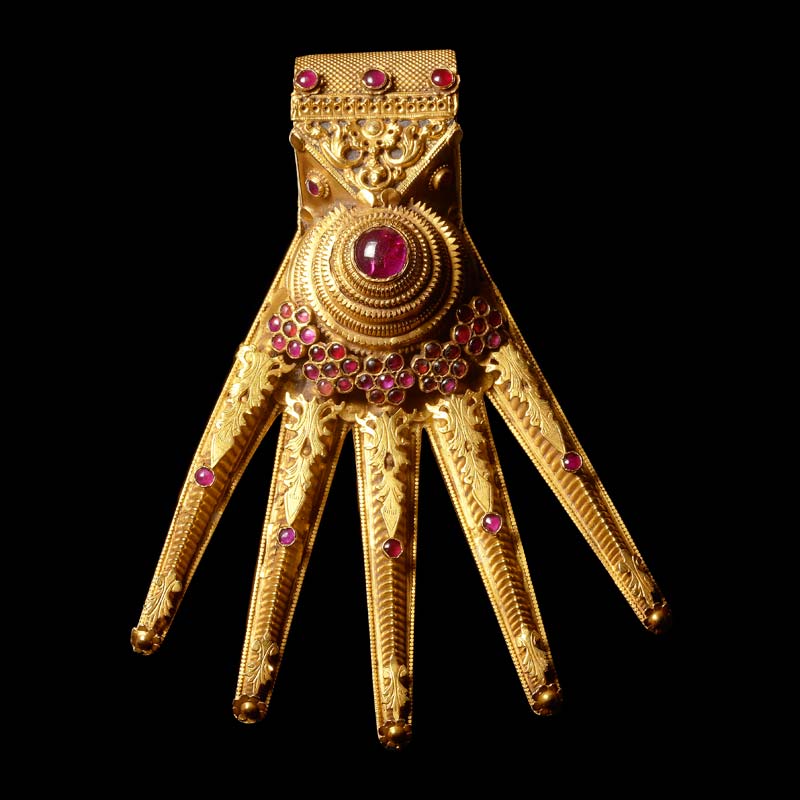Gold and Ruby Tali Pendant
A GOLD TALI PENDANT
Inset with rubies and red stone.
Part of a Kali Thiru (auspicious necklace)
Chettiars Nattukottai
Tamil Nadu
South India
19th Century
The Chettiars were former salt merchants belonging to the caste of rich merchants who were once settled on the Coromandel Coast and later migrated inland. The auspicious wedding necklaces were comprised of large central pendants and a number of smaller ones such as this that would flank the central pendant. These pieces evoked crab claws and shells that the Chettiars wore as ornaments or would represent the hands of the bride and groom.
These necklaces were part of the dowry offered by the parents to their daughter. They were considered as auspicious and protective and under Hindu law remained undisputedly her property to be used for her protection and security.
The word Tali comes from the name of a palm tree, the talipet that in some communities is used as a single strip of palm leaf tied around the bride’s neck to serve as a marriage emblem. The use of this auspicious emblem goes back into antiquity and in Southern India marriage tokens are strung on a sacred yellow thread and tied with three knots around the neck of the bride invoking the blessings of the Trinity: Brahma, Vishnu and Shiva.
Provenance:
A Private English Collection.
Similar Examples;
Barbier Mueller Museum, Geneva, Switzerland.
Metropolitan Museum, New York, United States of America.
| Place of origin | India |
|---|---|
| Date | 19th Century CE |
| Weight | |
| Size | 12cm |
| Availability | This item is available for sale. |
| Reference number | SO-0061 |
